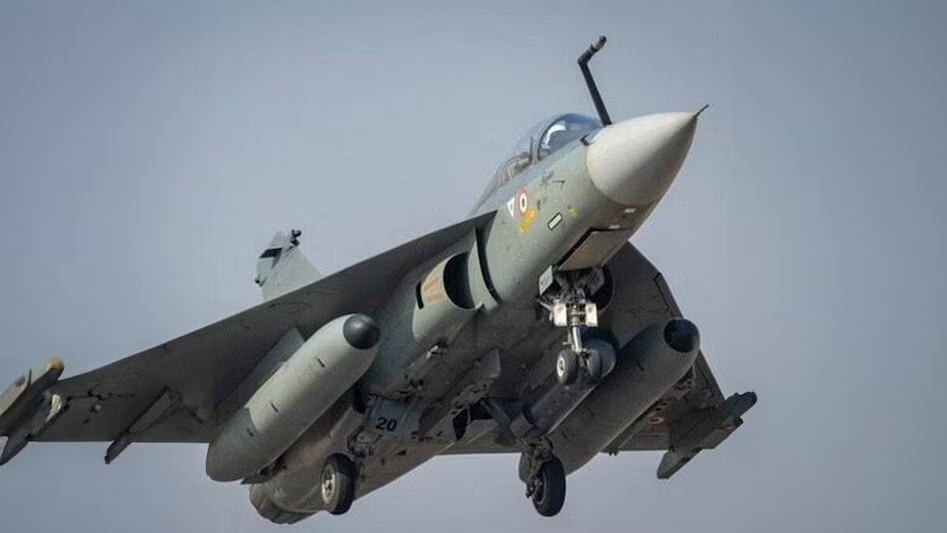After the terrorist attack in Pahalgam on April 22 claimed 26 lives, India launched a retaliatory 'Operation Sindhur' on the morning of May 7. The operation involved air strikes on nine terrorist targets located in Pakistan and POK (Pakistan-occupied Kashmir).
One of the most remarkable aspects of this operation was that the Indian Air Force managed to jam Pakistan's Chinese-made air defense systems in just 23 minutes, successfully executing the operation with precision.
Use of Suicide Drones
The Indian Air Force targeted key Pakistani airbases like Noor Khan and Rahim Yar Khan, utilizing 'loitering munitions,' or suicide drones, to devastate enemy radars, missile systems, and high-value targets. These weapon systems circle the target area to find an appropriate target before launching an attack.
The government declared that Operation Sindhur provided concrete evidence of neutralizing the enemy's advanced technologies, including Chinese-origin PL-15 missiles, Turkish-origin UAVs 'Yiha' or 'Yiho,' long-range rockets, quadcopters, and commercial drones. This showcases India's technological supremacy as its indigenous air defense and electronic warfare systems overcame Pakistan’s state-of-the-art weapons.
Superior Indigenous Technology
According to government sources, all strikes were successfully concluded without any Indian losses, reflecting the efficiency of our military strategy, surveillance, and weapon systems. From long-range drones to guided munitions, India set a new benchmark of military self-reliance using indigenous technologies.
Since the precise strikes on terrorists were conducted without crossing the Line of Control or international borders, a Pakistani retaliation across the border was anticipated. The Indian Army and Air Force employed an innovative mix of counter-UAS (anti-drone), electronic warfare equipment, and air defense weapons.
Air Defense Systems Neutralized
During the night of May 7-8, Pakistan attempted to target several Indian military bases in the northern and western regions through drone and missile attacks. Locations like Srinagar, Jammu, Pathankot, Amritsar, Ludhiana, Bhuj, and Adampur were targeted, but the Indian air defense system and Integrated Counter UAS Grid successfully countered all threats.
On May 8, the Indian armed forces struck air defense radars and systems in several Pakistani regions, including completely neutralizing a system in Lahore.
Multi-Layered Security System
The government remarked, "The Indian Air Force completed its mission in 23 minutes by neutralizing Pakistan's Chinese air defense systems, reflecting India's technological superiority." Various layers of defense, from the India-Pakistan international border to the country's interior, were developed, including:
Counter Unmanned Aerial Systems (UAS)
Shoulder-Fired Weapons
Legacy, yet effective air defense systems
Modern air defense weapons
According to government officials, on May 9-10, when the Pakistani Air Force attempted to attack Indian airfields and logistic bases, this multi-layered defense system thwarted their efforts completely. These systems have been developed over the past decade through continuous government investment and proved to be a 'force multiplier' during Operation Sindhur.
Integration of Technology
As per the government, these systems played a crucial role in safeguarding India's civilian and military infrastructure from enemy counteractions. Under Operation Sindhur, India employed battle-proven air defense systems, both vintage and new, which included:
Pechora System
OSA-AK System
LLAD Gun (Low-Level Air Defense Gun)
Additionally, India showcased indigenous technologies such as the 'Akash' missile system. This system successfully engaged multiple targets simultaneously in group mode and autonomous mode. Akash is a short-range surface-to-air missile system protecting sensitive areas and points from aerial attacks, equipped with Electronic Counter-Counter Measures (ECCM). The entire weapon system is configured on a mobile platform.
Milestone in Indigenous Technology
Operation Sindhur was not only a strategic success but also exemplified the seamless integration of indigenous technologies—from drone warfare to electronic warfare. It marked a pivotal step towards India's military self-reliance.




